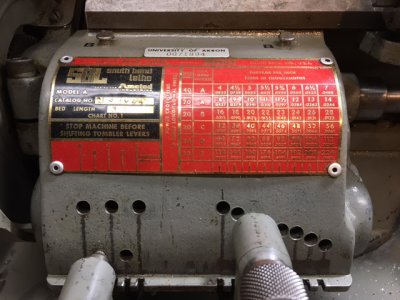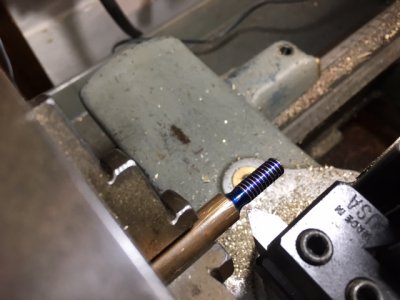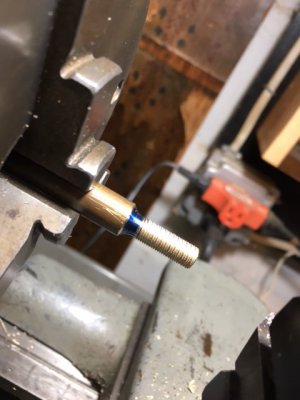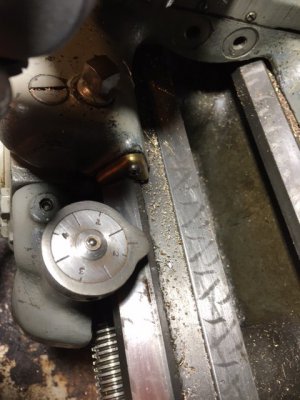- Joined
- Oct 19, 2020
- Messages
- 160
Well, I've given up for the day on cutting my first threads on my South Bend 10K. My objective was a 1/4 20 thread in a piece of brass stock. I took my OD down to 1/4 inch and set my lead screw speed.

I put my drive into back gears and set the RPM to about 150.

My compound was at 29 1/2 degrees. My tool is ground to 60 degrees. My first pass looked OK and measured 20 threads per inch as expected. But after several passes of about 5 thousandths, I kept coming up with a mess that looked like this.

The threads were rough and read at 40 TPI, not 20. I tried to engage my half nut on any of the 8 lines on my thread gauge since it was an even number of threads.

I did notice that my gauge does not allow me to engage exactly when the lines are on the mark. I can go a little before or a little after. Maybe that is where where I am making my mistake. The next time I can try always going a little before the mark. Does anyone know if I can adjust the threading gauge to engage closer to the mark?
Anyway, any advice is appreciated.

I put my drive into back gears and set the RPM to about 150.

My compound was at 29 1/2 degrees. My tool is ground to 60 degrees. My first pass looked OK and measured 20 threads per inch as expected. But after several passes of about 5 thousandths, I kept coming up with a mess that looked like this.

The threads were rough and read at 40 TPI, not 20. I tried to engage my half nut on any of the 8 lines on my thread gauge since it was an even number of threads.

I did notice that my gauge does not allow me to engage exactly when the lines are on the mark. I can go a little before or a little after. Maybe that is where where I am making my mistake. The next time I can try always going a little before the mark. Does anyone know if I can adjust the threading gauge to engage closer to the mark?
Anyway, any advice is appreciated.
